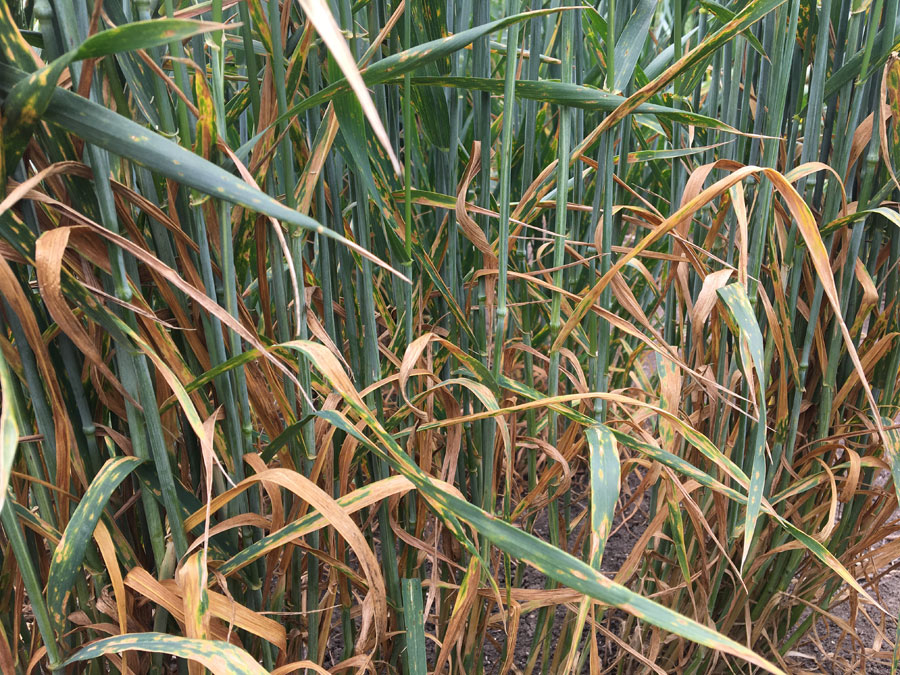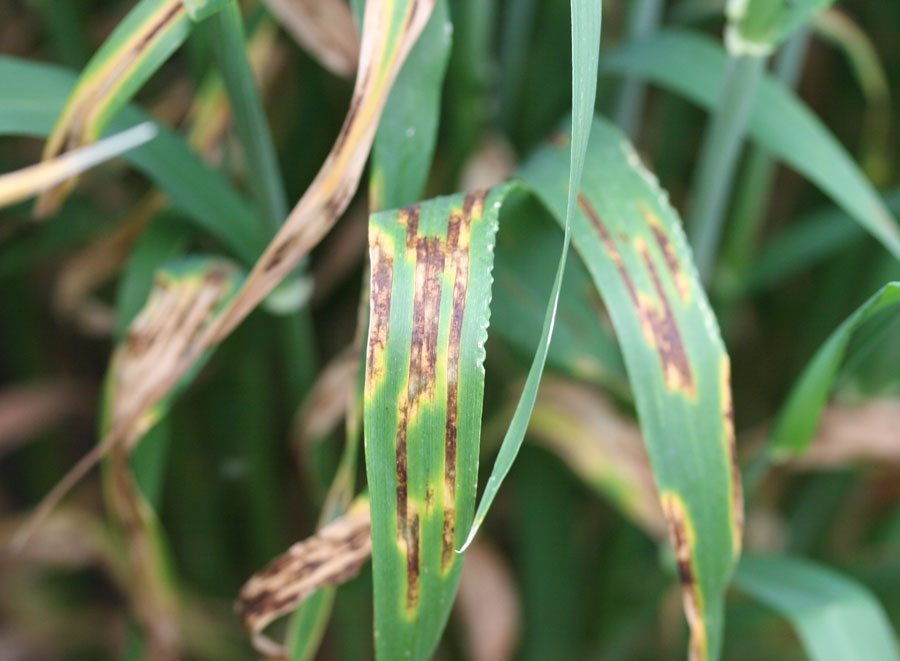Random sampling for disease in commercial winter cereal crops is important to stay abreast of developing issues and help prioritise growers’ needs.
While the prevalence of disease in any one year will vary depending on current and previous seasonal conditions, these surveys guide both the year-to-year tactical response and the longer-term strategic needs of industry.
Samples collected can also be used in other GRDC-supported research to track distribution and changes in pathogen populations, such as pathotype or fungicide resistance, and to guide the development of disease management packages and new varieties with improved resistance.
GRDC’s national surveillance program for winter cereals in 2019 and 2020 was undertaken by the Western Australian Department of Primary Industries and Regional Development (DPIRD), NSW Department of Primary Industries (NSW DPI), South Australian Research and Development Institute (SARDI), Agriculture Victoria and Queensland Department of Agriculture and Fisheries.

The Fulcrum app proved to be a valuable and efficient tool for recording and reporting on surveillance data. Photo: Dr Grant Hollaway
The surveys also provided the opportunity to improve survey protocols and train staff in disease identification, with a particular emphasis on identifying exotic diseases. Reassuringly, no high-priority exotic diseases were identified in these surveys.
A related GRDC national surveillance project led by DPIRD and assisted by NSW DPI, SARDI and Agriculture Victoria detected ramularia leaf spot of barley, which can be challenging to diagnose, in 2019 and 2020 in NSW, SA and Victoria adding to previous confirmed detections in WA and Tasmania (since 2016).
Western Australia
In WA, 97 wheat, 123 barley and 38 oat paddocks were sampled across 2019 and 2020.
The main diseases observed at high incidence across most port zones were the stubble-borne diseases yellow spot in wheat, spot form net blotch (SFNB) in barley and Septoria avenae blotch in oats.
The yellow spot-Stagonospora nodorum blotch complex was found in three-quarters of wheat paddocks in both 2019 and 2020. Analysis of the 2019 samples identified yellow spot as the dominant disease, while in 2020 it was nodorum blotch.
Even in the drier 2019, SFNB in barley was widespread and the incidence of net form net blotch (NFNB) increased in the Albany Port Zone.
Septoria avenae blotch was found in all oat paddocks surveyed in 2019 and in almost all in 2020.
The key implications are that stubble-borne cereal diseases are likely to be moderate to high-risk in 2021, particularly SFNB in barley.

Yellow leaf spot was one of the most common wheat diseases found in surveys of grower paddocks in 2019 and 2020. Photo: Dr Grant Hollaway
New South Wales
In NSW, 335 wheat, 135 barley and 30 durum wheat paddocks were sampled across 2019 and 2020. Crops were visually assessed for the incidence of disease, with DNA analysis used to quantify pathogen levels in plants.
Fusarium crown rot was the dominant disease under conducive dry seasonal conditions in 2019 but also maintained high prevalence with wetter seasonal conditions in 2020. While traditionally more prevalent in northern NSW, surveys show that this disease has become a more significant issue in central and southern NSW. The 2020 season favoured re-emergence of take-all at high incidence within crops, especially in southern and central NSW.
The incidence of leaf diseases across NSW including stripe rust in wheat, scald in barley and powdery mildew in both barley and wheat increased considerably in 2020. In both seasons, SFNB was detected in barley crops more frequently and at higher incidence than NFNB but there was a notable rise in NFNB levels in 2020.
South Australia
In SA, 39 wheat and 23 barley paddocks were sampled in 2020 and visually inspected for disease. Between one and five fungal pathogens were found on the upper leaves and/or heads in 90 per cent of the samples.
In wheat, Septoria tritici blotch was found in 53 per cent of samples. Yellow leaf spot, powdery mildew, stripe rust and leaf rust were present in 15 per cent or fewer samples. Stripe rust was at levels likely to cause significant yield loss in two samples from the south-east, where the disease was difficult to manage in 2020.
In barley, the widespread incidence of NFNB (43 per cent) is a concern given the potential for severe damage and increasing fungicide resistance. SFNB was found in 74 per cent of samples and susceptible varieties should be avoided.

Net form net blotch has also increased in prevalence in some areas compared with spot form, most likely due to the increased cultivation of barley varieties susceptible to this disease. Photo: Dr Grant Hollaway
Victoria
In Victoria, 78 wheat, 94 barley and 89 oat paddocks were sampled across 2019 and 2020.
In wheat, the dominant diseases were yellow leaf spot and Septoria tritici blotch with distribution related to rainfall zone. In 2020, stripe rust was more prevalent than in recent years due to seasonal conditions and partly due to the occurrence of a new pathotype.
In barley, SFNB and scald were the most common diseases. The most significant finding compared to surveys conducted in 2008 and 2009 was the increased prevalence of NFNB (about 20 per cent of paddocks), most likely due to the increased cultivation of susceptible varieties.
In oats, red leather leaf was the dominant disease in both years (90 per cent) and in 2020 bacterial blight was more common (35 per cent) due to wetter spring conditions.
Queensland
In Queensland, 24 wheat and 43 barley paddocks were sampled across 2019 and 2020. Dry conditions limited winter crop plantings in 2019 and disease incidence in both years in Queensland.
There were low levels of disease in wheat – mainly Fusarium crown rot and loose smut in 2019, and powdery mildew and yellow spot in 2020.
In barley, SFNB, NFNB and powdery mildew were present in both years. Powdery mildew was observed in almost every crop on the Darling Downs in 2020. Scald, which is very rarely observed in Queensland, was found at the Hermitage Research Facility in Warwick in 2020.
More information: Ciara Beard, 0438 468 484, ciara.beard@dpird.wa.gov.au; Andrea Hills, 0488 575 091, andrea.hills@dpird.wa.gov.au; Dr Steven Simpfendorfer, 0439 581 672, steven.simpfendorfer@dpi.nsw.gov.au; Dr Andrew Milgate, 02 6938 1990, andrew.milgate@dpi.nsw.gov.au; Dr Margaret Evans, 0427 604 168, marg.evans@sa.gov.au; Dr Grant Hollaway, 03 4344 3111, grant.hollaway@agriculture.vic.gov.au; Lisa Kelly, 07 4529 4291, lisa.kelly@daf.qld.gov.au

























































